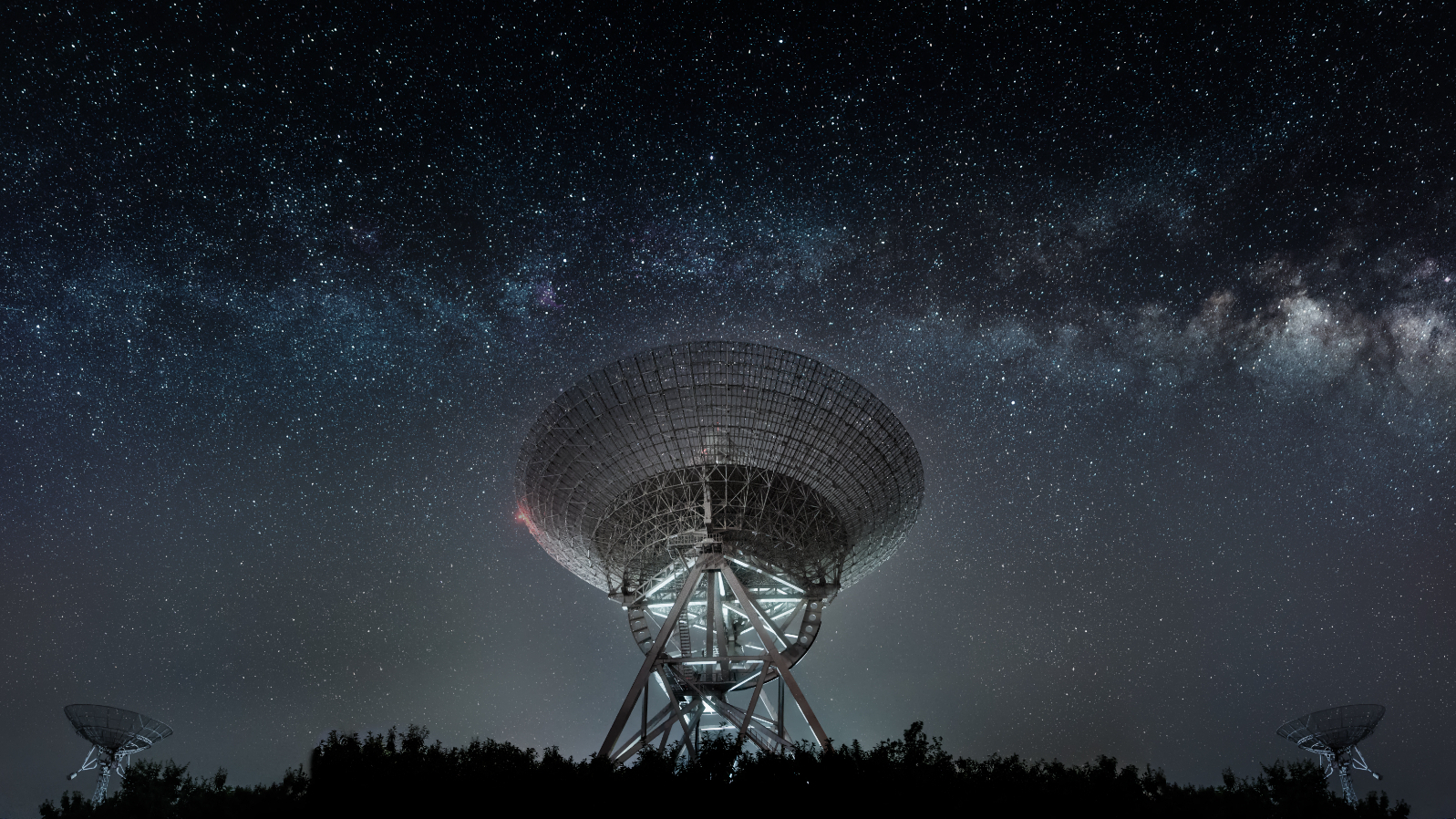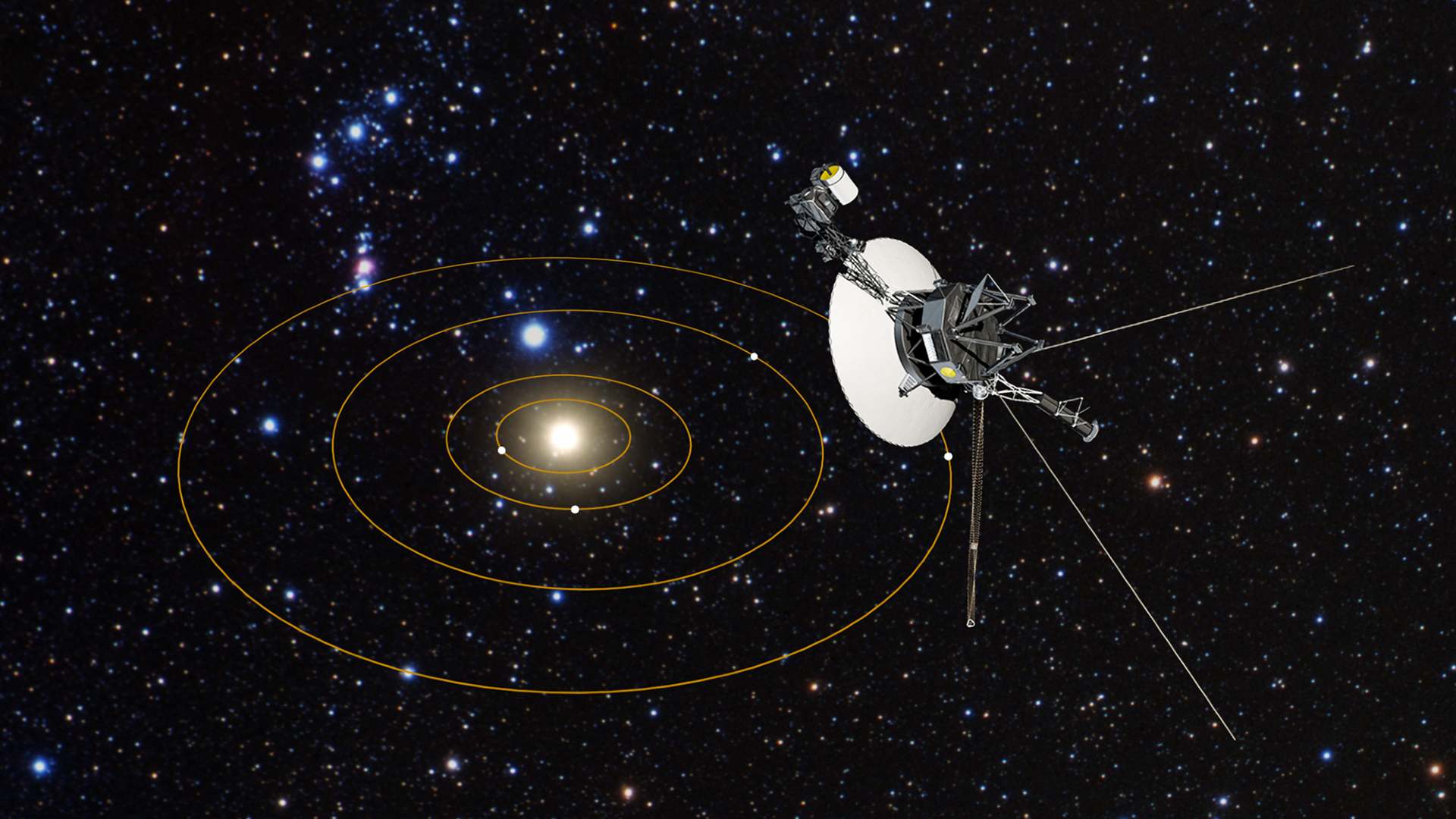
In July, some of the world's leading astronomers and planetary scientists who specialize in the search for technological intelligence elsewhere in the cosmos gathered to discuss their work at the University of Oxford's physics department.
They were attending this year's annual Breakthrough Discuss conference — a meeting of the minds to unravel how artificial intelligence, astrobiology and space missions may one day come to redefine our understanding of life and humanity's relationship to the cosmos.
"This was the first time we had the Breakthrough Discuss conference outside the U.S. It speaks to how technosignature science is becoming more universally accepted across universities. It's now a part of mainstream astrophysics," Vishal Gajjar, search for extraterrestrial intelligence (SETI) investigator and project scientist for Breakthrough Listen's international collaboration, told Space.com.
The conference is associated with other "Breakthrough" initiatives, including the Breakthrough Listen Project, which is a 100 million dollar program that will use some of the world's most advanced telescopes to search about one million nearby star systems for signs of technologically advanced civilizations. Another initiative, Breakthrough Watch, is aiming to characterize a number of Earth-size rocky planets within 20 light-years of Earth to accomplish the same goal of finding life beyond our world. The Discuss conference provides a platform for researchers working in different fields of astrobiology to compare and discuss their work, and to speculate on what the future of this exciting field might hold.
Related: Could AI find alien life faster than humans, and would it tell us?
The hot topic of this year's conference centered around how artificial intelligence tools can help comb through massive sets of data generated by telescopes and other observatories to identify any indications that we are, in fact, not alone in the universe.
Historically, scientists with the search for extraterrestrial intelligence (SETI) institute — an organization that focuses on the search for extraterrestrial life — have had to decide where to look for signals as well as what type of signals to look for in the first place. How would a sufficiently technologically advanced civilization alert their presence to anyone out there listening? How would we locate any such messages? The answers to these questions — answers that would mark the starting point of any quest to find advanced alien life — have been, at best, educated guesses thus far.
But maybe that doesn't need to be the case going forward.
New developments in artificial intelligence and improved levels of observational capabilities mean enormous volumes of data can be captured and sifted through at record rates. And these advancements, perhaps, may resolve some of the current limitations in how SETI scientists conduct their searches. Rather than taking observational stabs in the dark, it might now just be a matter of waiting for something unexpected.

Where to look?
Which part of the sky should a typical technological signature (or technosignature) search focus on?
This has been a question SETI investigators have sought to answer because, as time and resources are limited when it comes to having access to large and expensive telescopes, investigators want to give themselves the best chance at spotting something potentially interesting.
Largely thanks to funding, as well as new observatories that capture data from large areas of the sky simultaneously, SETI investigators are overcoming some of these limitations when it comes to the "where" in this equation.
"We are surveying almost a million nearby stars identified by the Gaia mission," Gajjar told Space.com.
Launched in 2013, Gaia is a space-based telescope that's creating a catalog of over one billion stars in the Milky Way. From this catalog, SETI investigators identified one million nearby stars of various sizes and luminosities to keep track of using some of the world's most powerful ground-based radio and optical telescopes, including the Green Bank Telescope, Parkes Observatory and the MeerKAT Array.
Scientists aren't only restricting themselves to stars, though. It's possible that a technosignature could come from empty space — from an object that isn't a star or planet but rather something like a spacecraft or probe that might be broadcasting a signal. "We are also broadly looking at the entire galactic plane of the Milky Way and the galactic center as well, where there is the highest concentration of stars," said Gajjar.
But new technologies can also create new problems.
When we are searching with such a large number of targets, and therefore collecting such a large volume of data, it's inevitable that we'll generate a massive number of false positive detections from our own technology. For instance, in terms of electromagnetic waves, human technology is constantly producing signals (phone towers, airplanes and drones, to name a few) and these local interferences are also picked up by scientists' technosignature detection mechanisms. So, separating our own signals from those of a potential extraterrestrial source becomes a real challenge.
Gajjar explains that researchers have successfully been able to train artificial intelligence models on raw data that has been collected so far (which is full of local false positives), so the model can effectively eliminate these signals, reducing the amount of "noise" that researchers must shift through to find interesting signals. "With AI we have been able to remove 99.8% of our own signals," said Gajjar.
What to look for?
Deciding what a "typical" technosignature should look like is difficult because, as humans, we may assume another technologically advanced civilization would create a signal with characteristics we use to allude to our own existence. For example, a probe like Voyager 1, or broadcasting radio waves into space.
However, we ought to get away from our anthropocentric way of thinking. "So far we have been limited in our imagination of what these technological signatures might look like," Gajjar said.
There are still legitimate scientific reasons, though, why scientists think a signal should have certain features. "Our main argument has to do with energy," says Gajjar. If a civilization wanted to create a "beacon" to disclose its presence, for example, it makes sense that they would want to create a signal that stands out — but doesn't cost extreme amounts of energy to create.

Consider a signal that taps into the electromagnetic spectrum, the continuum of various wavelengths and energies of radiation. The shorter the wavelength, the more energy is required to generate a signal within its range. It would thus cost a civilization vast amounts of resources to generate a unique signal in the gamma band of the spectrum, but way less to create one in the radio band. On the other hand, though it sounds extreme, what if an extremely advanced civilization could actually move a whole star in such a way that they form unique gravitational waves? Generating ripples in the fabric of spacetime by moving a massive object to alert the rest of the universe to your presence would be astounding of course, but it would take mind boggling amounts of energy to do — according to the physics we know about, at least.
If the signal is too low in energy, though, it can get lost among the background of other electromagnetic sources in the galaxy — so, theoretically, radio signals may not be the optimal way to go despite the relative ease with which they can be generated. "But even within that boundary, there is still a vast amount of possible ways a signal could look," says Gajjar.
For instance, it also might not be the case that we detect "beacon" signals where a civilization wants to be seen. It could be a "leakage" signal, where we intercept communication intended for a civilization's own internal communicative purposes (our own radio signals are leaking into space in this way, in fact). So, if we want to be agnostic about what a signal could look like, Gajjar says we need to simply search for anomalies. All of them.
And this is where artificial intelligence comes in.
Researchers have been developing artificial intelligence models capable of identifying anomalous signals in vast astronomical datasets generated by surveys like the ones mentioned earlier. These models work in similar ways to how large language models (LLMs), like ChatGPT, work. LLMs basically predict the most likely word to follow another in a sentence based on large quantities of data, and these anomaly-detectors predict what electromagnetic signals are most likely to follow based on previous observational data.
If you take hundreds of hours of observational data that you have already gathered, and then you train an AI to make probabilistic predictions about what electromagnetic signals should happen next, and then if the new data violates what the AI predicts, that could be considered an anomaly.
"Machine learning algorithms in particular have proven effective at detecting anomalies but humans still have a crucial role to play," Michelle Lochner, an astrophysicist who also spoke at Breakthrough Discuss, and who develops anomaly detection algorithms told Space.com. It's then the job of astrophysicists to develop an explanation for what could be the cause of this anomalous signal.
The future
While galactic surveys are already generating large quantities of data for SETI investigators to sift through, even more are on the way. Next year, the Vera C. Rubin Observatories Survey of Space and Time will begin operations and is expected to generate 20 terabytes of data every single night (60 petabytes over 10 years), and ultimately provide “32 trillion observations of 20 billion galaxies.”
In addition, the Square Kilometer Array, which will exceed the image resolution of Hubble by 50 times, is slated to open in 2028.
There will be computational challengers for astronomers seeking to identify new potential targets in large data sets created by current and future observatories, however, "the possibilities for scientific discoveries are enormous and, by combining large datasets, sophisticated AI algorithms and human insights, this may be the time for one of the most important discoveries in human history," said Lochner.
Gajjar says he is also excited about the future of technosignature science.
"When Breakthrough Listen started, it changed the whole game and opened up this new area of research and triggered so many opportunities across the world - it's being funded at all levels of academia which was certainly not the case when I finished my P.H.D!"
Technosignature science appears to have entered the mainstream. Researchers wanting to enter the field are finally being taken seriously, and new avenues for funding as well as emerging technologies are turning what was once a field for retired astrophysicists into a respected scientific pursuit.
"Searching for technological signs of aliens', can sound a bit absurd to say, but why build multibillion dollar telescopes if we can't even check to see if there is another advanced civilization out there? They might even want to say hi."







